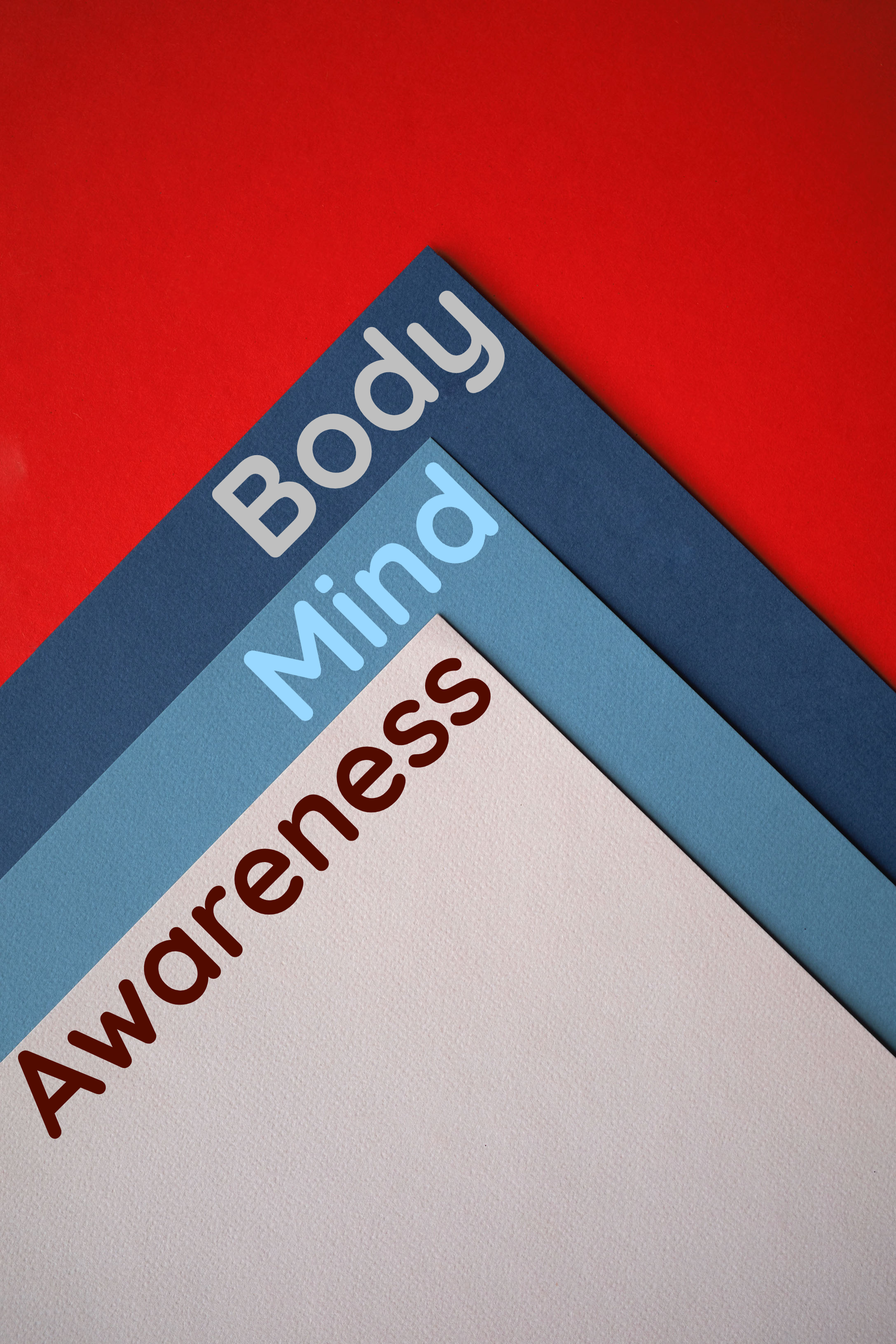Optimizing the mind's energy and maximizing its potential
Energy is at the center of the complex interplay between the body and the mind. We know that matter in any form is energy. For example, our bones are solid matter. Scientists would say bones are not inert. They are a dense living swarm of atoms. By inference, we could say each bone in the body has tremendous amounts of energy. However, although matter traps energy, most of it remains inaccessible. The body uses bones primarily as a means of support, not a source of energy. The mind operates differently. The mind does not have a material basis and is mainly energy in continual movement. Mental energy is fluid, like water. It is easily accessible. Just as we quickly sink in water, we descend into the mind unless awareness becomes the anchoring support.
The mind does not have a material basis and is mainly energy in continual movement.
When we grow in awareness, we go from depending on the mind to directing the mind. The mind consumes our alertness and awareness when we identify with the contents of the mind. Just as rockets need a significant amount to thrust to escape Earth’s gravitational pull, it takes a lot of effort to free awareness from the mind.
The mind consumes our alertness and awareness when we identify with the contents of the mind.
Once awareness is independent of the mind, we have full access to the mind’s energy, and we can use it for any purpose of our choosing. The mind is a precious resource. It is in our possession from the beginning to the end. All human achievements happen through the mind. When we optimize the usage of the mind’s energy, we also maximize its potential.
The mind is a precious resource. All human achievements happen through the mind.
As matter becomes less dense, it’s energy becomes more accessible. The bloodstream carries nutrients that supply energy to all parts of the body. Cells easily extract nutrients from this circulating life-giving liquid. From the air we breathe, energy is even more accessible. Oxygen is directly absorbed into the bloodstream from an air-tissue interface, unlike solid and liquid food, which need some processing in the body.
Energy is continually moving from one form to another in the body. The energy levels of the body influence the state of mind. For example, when the body is weak, the mind also becomes dull. Thinking requires energy, and the mind interfaces with the brain, which may prioritize nutrient usage for survival rather than to aid deep thought.
The energy levels of the body influence the state of mind.
Once the body is topped off with food, the mind regains its energetic nature. Fasting makes the mind dull. We cannot equate such dullness of mind to transformation. Awareness leads to real change. Established in awareness, we transcend the limitations of the mind and the body.
Awareness leads to real change. Established in awareness, we transcend the limitations of the mind and the body.
Before we can transcend the mind, it must be fully understood. We cannot easily ignore the mind. It is a constant presence, front, and center in our waking consciousness. The mind is not physical matter. Everything within what we consider as the field of our mind is filled with energy. Typically it is in the form of thoughts. The body cannot transfer energy it holds in storage to the mind, as is the case of fat cells that release stored energy to supply the needs of the body in times of need.
The mind has no finite boundaries that we can perceive. Our eyes can perceive distant stars in the night sky, but we are incapable of seeing beyond the surface layers of thoughts. Thoughts create an impression of a finite boundary for the mind. However, the space in which thoughts come and go is limitless. Awareness links us to that infinite space, while the ego or individuality limits us to the finite boundaries of thoughts.
Thoughts create an impression of a finite boundary for the mind. However, the space in which thoughts come and go is limitless.
We can store and lock up physical objects. But we cannot lock up the mind which is in continual movement. We try to fight the flow of the mind, trying to make it conform to our wishes. It won’t give in quickly, and in the ensuing effort, we lose time and energy. When we try to push against waves in the sea, we tire and not the sea. Similarly, the energy of the mind is like the sea. We push back when it overwhelms us. But the mind does not tire. Energy is always alive. It makes up the present.
Energy is always alive. It makes up the present.
Whether we negatively or positively orient our thoughts and imaginations, we use the same energy for both. Compared to the raw, undifferentiated energy of awareness, the mind is highly specialized. In the mind, there are many divisions, such as the conscious, subconscious, unconscious, intellect, ego, and so on. When we remove their contents, they are, in essence, the same energy. Depending on their end-use, we call them by various names. When a conscious link to the mind is cut off in a state of deep sleep, all these divisions disappear in one seamless field of energy.
In a house, we may have many switches controlling various lights, gadgets, and appliances. These may be turned off or on individually, but one main switch controls all of them. When the ‘main switch’ of the mind is turned on, we are conscious and awake. It is flipped to the off position when we are asleep. Electricity remains in the wires just outside of the main switch to the house. Similarly, even though we are sleeping, there is some part of the mind which is in constant contact with an inner energy source. Awareness is the link to that internal source of energy.
Awareness is the link to an internal source of energy.
We cannot fully explain the energies that animate the mind. From the perspective of the primary wire supplying electricity to a house, there is only one house. However, from the perspective of the individual wires supplying various rooms and places in a home, it becomes a maze. Electricity does not move faster in one part of the house and slower in another section. Similarly, in the various divisions in the mind, energy moves at the same rate. Our attention determines which part of the mind proportionally receives more energy.
We cannot quantify the energy supplies of the mind. If we consider the mind as one complete unit, its various divisions take up differing proportions of the total energy of the mind. At times, our imagination may be very active, and this process may take up a significant amount of the mind’s energy. In some situations, the intellect may be the primary consumer of energy. Memories take up a small amount of maintenance energy. When attention shifts to the past, there is a diversion of mental energy to that part of the mind.
Keeping a mental track of what we consider as ‘my possessions’ also takes up a considerable amount of the mind’s energy. Fear, especially of loss, is a large consumer. Energy also leaks out of the mind through the senses.
Fear, especially of loss, is a large consumer of the mind’s energies.
Information coming in through the senses and registering as experiences is not a passive process. It is an active energy-consuming process. The senses are very porous, especially the eyes. A lot of energy is lost through the eyes as they wander from one object to another. Our hidden desires window shop in the world through the eyes. As energy leaks out through the senses, we begin to experience increasing mental fatigue.
A lot of energy is lost through the eyes as they wander from one object to another. Our hidden desires window shop in the world through the eyes.
Interpretation and analysis are some of the main functions of the mind. It is a computational device of extraordinary capability. Just as we can tell which processes are taking up how much of a computer’s computational power when we become aware of the mind, we can evaluate in real-time which aspects of the mind take up the most amounts of energy. It varies from one individual to another.
A computer’s performance cannot exceed the capabilities etched into the design of its main chip. Similarly, the capabilities of the mind are not the same in every individual. How much the mind can achieve depends on its ‘main chip,’ which is conditioning. More significant the conditioning, less the capability of the mind, and vice-versa.
How much the mind can achieve depends on its ‘main chip,’ which is conditioning. More significant the conditioning, less the capability of the mind, and vice-versa.
Some habits and conditioned patterns in the mind are easy to spot and correct. Others are very subtle and fastidious. Perhaps the deepest and most securely embedded habit is of looking at the world through the lens of the ‘I’ or the false self. It is like looking at the vast sea in relation to one wave. Waves may be big or small. Similarly, the sense of ‘I’ is very dominant, or it may be minimal. But in comparison to the vast space in which it exists, the ‘I’ is very insignificant.
All the energy that flows into the mind goes through the ‘I.’ It is the central gatekeeper. It decides where our attention lives at any given moment. Most of the time, we unconsciously follow. Even a single moment of alertness will provide us with a completely different perspective about ourselves and the world. For this, we need to be alert and watchful of the ‘I.’ Initially, it may seem like a challenging endeavor, but as with any other skill, the more we practice, the easier it becomes.
All the energy that flows into the mind goes through the ‘I.’ It is the central gatekeeper.
When we don’t give in to the ‘I,’ awareness immediately emerges. It is as if we are stepping out of a small building into the open and from where we can see the whole building. Conditioning is like the roof of a building. It is fixed and does not change. Being in awareness is like being under the open sky. The deep blue color of the sky remains changeless, while clouds come and go. Thoughts are like those clouds.
Awareness helps us see the entire inner sky, both the unchanging background and changing thoughts. When we are no longer under the influence of conditioning, we are out in the open and away from the stale old mind. The infinitely blue sky of awareness then replaces the low ‘roof’ of conditioning.
We can compare conditioning to a building that is old and crumbling, and awareness to a new, modern, and energy-efficient structure. Once we are out of the clutches of the ‘I’ and prior conditioning, we are free to use the endless stream of energy associated with free awareness to ‘build’ the type of mind we would like. A new, modern, and energy-efficient mind becomes a ‘smart’ mind that replaces the old ordinary mind we previously carried everywhere.
Once we are out of the clutches of the ‘I’ and prior conditioning, we are free to use the endless stream of energy associated with free awareness to ‘build’ the type of mind we would like.
When various parts of the mind are in operation at the same time, it takes much more time, energy, and effort to concentrate the mind than if only one portion of the mind were active. For example, our attention gets divided into thoughts of the past and the future. To concentrate on a task at hand in the present, we will have to first deal with thoughts of the past and the future. But if the mind were relatively free of thoughts, then focusing it on the present becomes that much easier. Like lights that come on automatically when we enter a smart building and turn off on their own when there is no one around, a thought-free mind can quickly undertake any task when required.
if the mind were relatively free of thoughts, focusing it on the present becomes that much easier.
If we can activate and turn the mind off at will, we will not have to spend much effort in focus and concentration. There are many tools and methods to focus and concentrate the mind. But such intermittent periods of concentration of the mind’s energy cannot bring about lasting transformation on their own unless we can stand apart from the process and become a witness.
Becoming a witness to the mind is like being the person who sharpens a knife without being cut by its blade. Witnessing the mind sharpens the mind, and this sharpness of mind will not cause any harm to the space of infinite energy in which the mind exists.
A sharp knife will need less force to cut through an object compared to a blunt knife. When the mind is made intelligent, attentive, and alert, it uses far less energy than a mind that needs to be coaxed and prodded into action.
Being aware of the space in which thoughts come and go, experiences appear and disappear, will make us very efficient users of the energy we call the mind.







